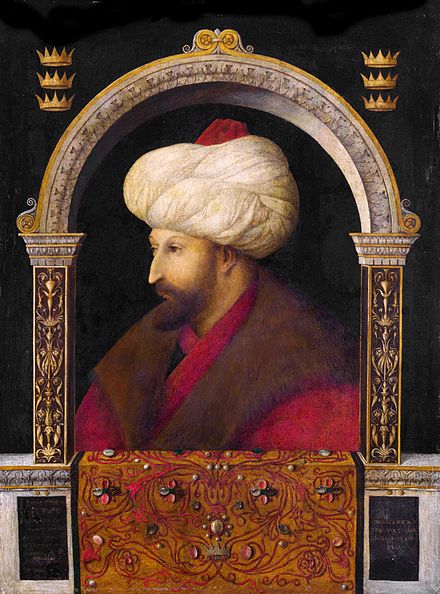MARCH 25, 2020 – When I was a student (in ancient times) of ancient times, one standout was Alexander the Great. There was a guy who studied at the feet of Aristotle, then at my age as a college junior, became king on his way to becoming a conqueror, and ultimately “Great,” all by the time he bit the (Persian) dust at age 33.
Roughly 1700 years later, along came another upstart, another impetuous, head-strong “great,” Mehmed the Conqueror. At age 21—the minimum drinking age in Minnesota—this guy decided to do what 23 armies before him, including one led by his father, had failed to do: conquer Constantinople, at the time, eastern capital of the Roman Empire.
To fill time during The Crisis—and to achieve a modicum of perspective—I watched a Turkish docudrama about Mehmed’s feat: available on Netflix, it’s called Rise of Empires: Ottoman. Personally, I think the six-part series does an excellent job of conveying “big picture” aspects of a major turning point in world history. The Turks’ conquest of Constantinople took eight weeks of over-the-top tactics, and only by insane, ruthless, unwavering genius did Mehmed earn the moniker of “Conqueror.”
The series left me slack-jawed. I had long-forgotten whatever details of Mehmed’s feat had been presented in my excruciatingly dry, undergraduate seminar on “Western Civilization” (taught jointly by the pipe-smoking, Oxford-educated college president and the Medievalist college dean). One important fact, however, had found itself into deep storage: 1453—the year when the 21-year-old “kid” became “Conqueror.”
Perhaps “1453” was reinforced by a later class on “Art History” (taught by the ever-memorable, supremely inimitable, “Professor Beam” who was as bright as a sunbeam.). But the larger context and perspective of “1453” had been lost on me until more recently.
If 1453 marked the end of the Eastern Roman Empire (Rome proper had fallen nearly 1,000 years earlier), that was not the end of Europe (Constantinople, renamed Istanbul by the Turks, sits on the European side of the Bosphorus). Led by the Iberians, the Genoese, and the Venetians, and followed by the French and English, Europe would re-conquer much of the world. But, history, being ever fluid and dynamic over decades, centuries, millennia, took Europe on a perpetual cycle of highs and lows.
After bringing Constantinople to its knees, Mehmed went on to conquer other stretches of the map, including all of Anatolia (present day Turkey) and the entire Balkans. The Ottoman Empire (“Ottoman” derived from “Osman,” the 13th century tribal leader who started the whole deal) had ebbed and flowed for a while before Mehmed, and it wouldn’t reach its zenith until the 17th century, under “Suleiman the Magnificent.”
Eventually, Turkey—what was left of the Ottoman Empire by the beginning of the 20th century—would become known as, “the Sick Man of Europe.”
All of which reminds me of the poem, Ozymandias, by Percy Bysshe Shelley—from my seventh grade memory bank.
(Remember to subscribe to this blog and receive notifications of new posts by email.)
© 2020 by Eric Nilsson
